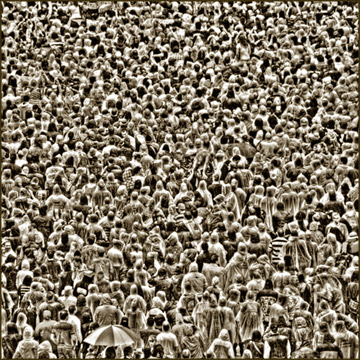|
Ageing population:
A problem world over
by Sajitha PREMATUNGE
 Sri Lanka being a third world country has population trends that of
any other developed country. But with the World Population Day just
behind us some focus have to be given to those trends that may have
adverse effects on Sri Lanka's socio-economic setting. Sri Lanka being a third world country has population trends that of
any other developed country. But with the World Population Day just
behind us some focus have to be given to those trends that may have
adverse effects on Sri Lanka's socio-economic setting.
The composition of Sri Lankan population has definitely improved
since the 60s, when the government thought it apt to introduce family
planning explained W. P. Amarabandu, Head of the Department of
Demography, University of Colombo.
"In fact Sri Lanka has been the most successful nation in Asia in
this regard", he said. The current birth rate is only 15 per 1,000;
death rate 8.5% and natural increase only 1%, which is almost equal to
that of developed countries.
But the vicious cycle of population is such that lower fertility and
death rates results in the rapid decrease of younger population. The
life expectancy of a Sri Lankan is now close to that of a developed
country, which suggests that the populating is aging.
The ideal target of total fertility rate is 2.1. But an unusual and
yet unexplained trend was discovered in the 2006/07 demographic and
heath survey, in 2003 the total fertility rate 2.3, which was a sudden
jump from the previous 1.9. W. P. Amarabandu suggests that this maybe
due to the fear of becoming a minority race or remaining one.
"Back in 1962 a male's life expectancy rate was 61.9% and a female's
61.4%. In 2001 the life expectancy rate of a female was 75. 4% a man's
life expectancy rate is 70.7%" in fact W. P. Amarabandu explained that
another major trend is the increasing number of females. The 2001 census
is the first census that detected that females out number males in Sri
Lanka.
"Before 2001 the sex ratio was always above or somewhere around 100%.
In the 2001 census it was 97.91%, which means that for every 100 females
there are 97.91 males." Women can already be observed as having a main
role in fields such as educating in institutional level explained W. P.
Amarabandu. Demographers predict that in 2031 or so Sri Lanka would have
a stable populating of 25 to 30 million.
 The child population of Sri Lanka is considered as the portion of
populating under the age of 15. The age range of the work force falls
between 15 and 64. The old population is above 59. In 2001 the child
populating of Sri Lanka was 24% of the total population. The child population of Sri Lanka is considered as the portion of
populating under the age of 15. The age range of the work force falls
between 15 and 64. The old population is above 59. In 2001 the child
populating of Sri Lanka was 24% of the total population.
The working population and elderly population was 69% and 7%
respectively. But by 2006 the tables have turned. "In 2006 the child
population was 22%, work force 68% and elderly population 10%" explained
W. P. Amarabandu. And according to predictions by 2021 the child
population will decrease to 18%, work force will be around 67% and the
elderly population will increase to 16%.
"As the populating ages the retiring age also extends accordingly. In
developed countries the age of retirement is 65, in Sri Lanka it is 60.
But this may change in the future."
All though aging of a populating has minimal affect on the workforce
of that country, the age composition of the labour force is definitely
affected. More and more elders would make up the workforce.
According to W. P. Amarabandu this has vast socio-cultural
implications. "The socio-cultural setting has changed a lot since the
60s. For example the ancestral family home was left in the care of the
youngest male in the hope that he would take care of his elderly
parents. But these sorts of traditions are deteriorating in the
commercialized culture of the day.
Moreover the agricultural economy that these types of traditions
depended upon is now non existent." Elderly parents ultimately end up in
homes. Taking care of elders has become a major problem, which calls for
immediate attention.
But the socio-cultural implications are nothing compared to the
economic implications. More capital should be spent on health care for
the older population.
Sri Lanka's population shows a clear spatial difference. "This maybe
due to the fact that terrorism disrupted natural distribution." W. P
Amarabandu explained that another drawback in demographic studies is the
lack of statistics based on racial composition. Another distinct trend
observed in Sri Lanka is the increase in the divorce rate.
1963 it was 0.2%, in 2001 it was 0.7%." The theme of this year's
World Population Day is the education of girls on developmental issues
such as poverty, human rights and gender equality and the effects of the
economic recession on women.
"The economic recession does indeed have a major affect on women",
explained W.P. Amarabandu. He pointed out that most of the fields that
employed more women were hard hit by the economic crisis such as the
garment and plantation industries, especially tea and rubber
plantations. |

